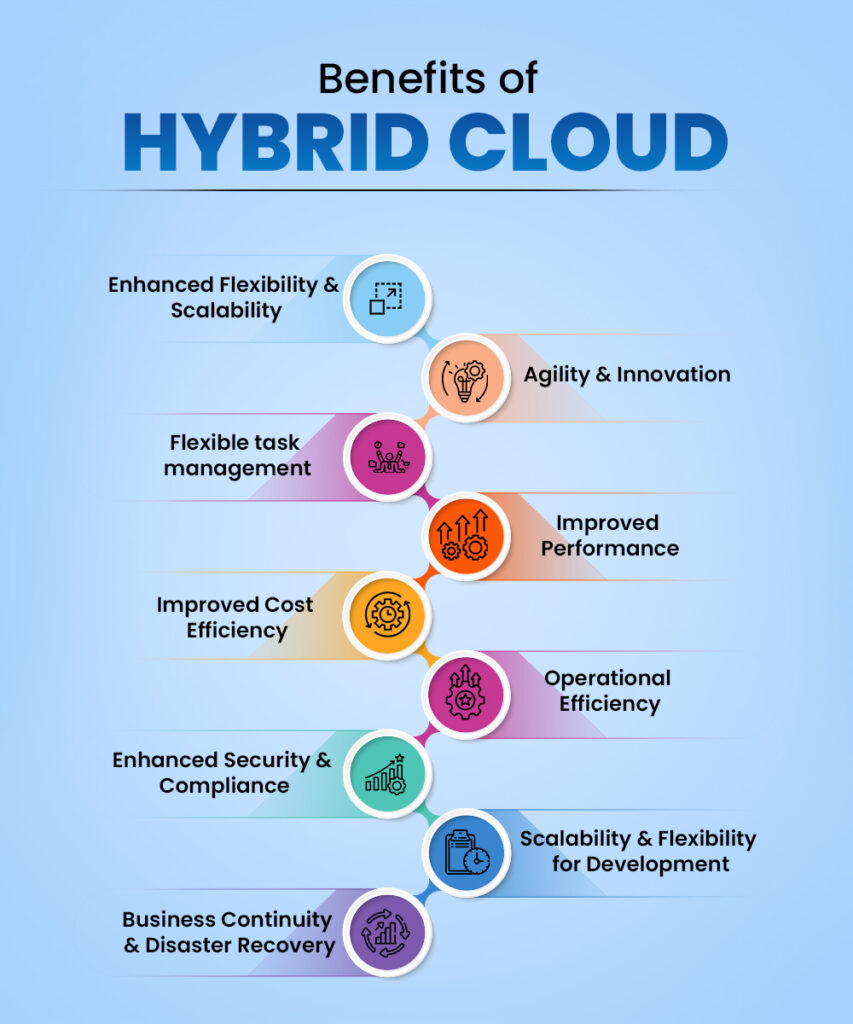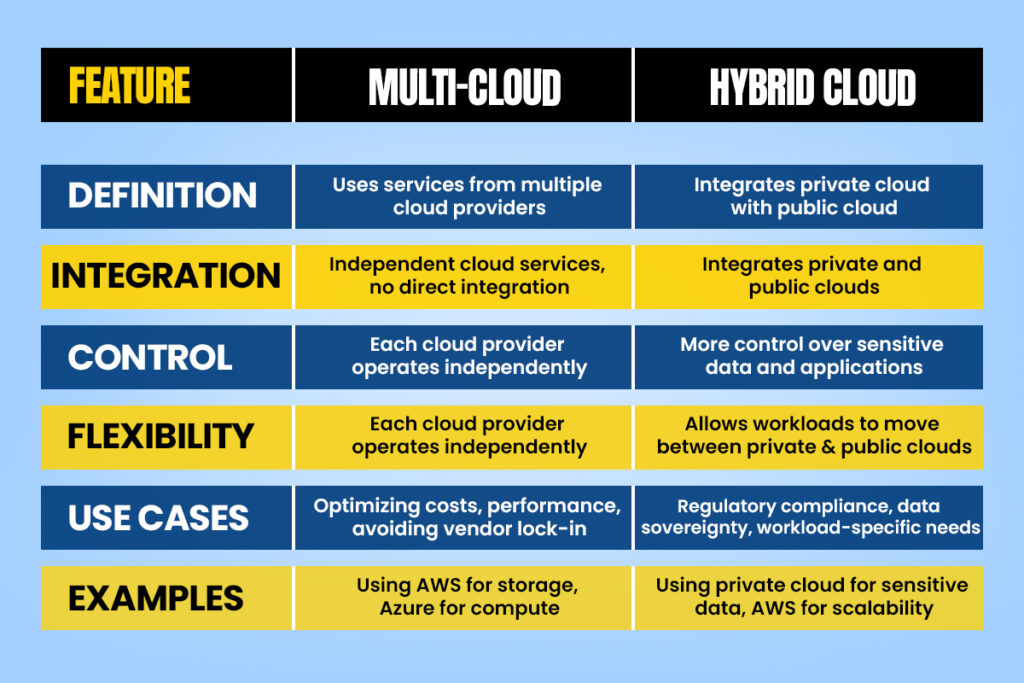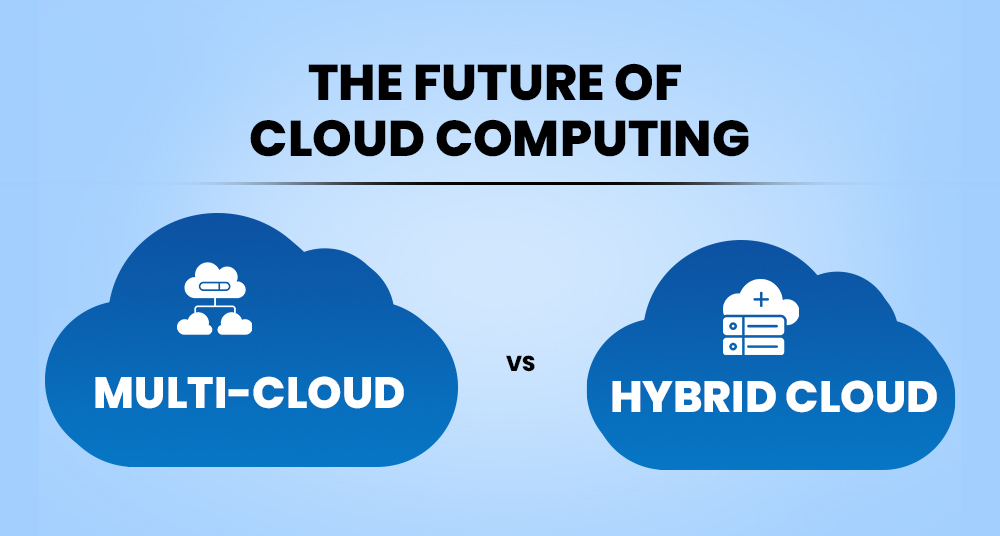Cloud services and use may always improve as the world changes. Many utilize shared and different clouds nowadays. Each has perks and downsides that affect cloud utilization by enterprises. Multi-cloud and mixed-cloud systems will differ in 2025. How will it differ? In a few years, the clouds will clear.
Learn how cloud computing began
Cloud computing will be significant for several clouds in 2025. Each way’s pros and cons? This is what your company needs to maximize its tools. You may pick your mates to work with, and mixed clouds speed you up. Shared cloud lets you accomplish more and feel safer.
As cloud computing expands, organizations must utilize it properly to succeed. Many reputable companies produce multitasking phone applications. Cloud adjustments will be minor.
Staying ahead requires constant learning and improvement as technology develops. World objects are more digital. These clouds may help a firm develop and get clients.
Use of Multiple Clouds
“Multi-cloud users.” utilize several cloud services from various companies. A firm doesn’t have to utilize one seller using this strategy. Using their top services will make it easier to use and operate better. They may also improve every company.
Why do you need many clouds?
Multiple Clouds Options
A corporation may benefit from many clouds in numerous ways. This is all good:
If you have another option, don’t be stuck. Businesses that utilize the cloud often may maximize its benefits. An alternative cloud provider may offer superior data analysis capabilities or cheaper storage.
Multi-cloud businesses don’t have to utilize one service. If necessary, they may switch suppliers.
Make it stronger and endure longer
Multiple machines make it simpler to repair problems when they occur. The second service may keep things running if the first fails.
Many users can always access files and programs owing to these efforts.
Finding the best bargains
- Low cost: A firm may pick the cheapest service provider from a list. This lets companies save money and gain a lot.
- Businesses may save money by redistributing resources by necessity and cost.
Better finished work
Faster: Using many cloud services lets a corporation achieve the quickest speed for diverse tasks. Apps that hate waiting run faster near the cloud.
Multi-cloud alternatives combine the finest characteristics of many cloud platforms, allowing businesses to achieve more.
Caution and compliance
Risk is safer when shared across several cloud service businesses. One service may be attacked without compromising the system.
How to Get New Tech: Things constantly improve in the cloud. Multi-cloud businesses may remain ahead by using the latest technologies and services from several sources.
Fast and fresh ideas
To stay up with innovation, cloud service providers add capabilities often. Some companies buy new innovations and equipment from many sources. It keeps them ahead in the market. A “multi-cloud” approach.
Businesses have additional alternatives when they can connect to many clouds. By using the greatest tools from each service provider, this works. This accelerates modifications and release.
Making the greatest progress
After that, any cloud service may perform its best for business. A data service with strong machine-learning tools is available. You can store things differently using this tool.
What Could Make Multi-Cloud Bad?
A firm must work hard to leverage many clouds effectively. These usually go wrong:
It’s difficult to manage
The leaders must do more: They require time, money, and high-tech gear to monitor, operate, and maintain computers.
To integrate cloud services, you require expertise and tools.
Adherence to Safety Standards and Regulations
Safety risks: Cloud security is difficult. Your service firm must monitor its safety guidelines.
Because data is kept globally, it’s hard to know whether cloud service businesses are obeying the law.
Moving and managing data
Transferring files between computers may be expensive. Because transmitting information is expensive.
When migrating data across clouds, you must maintain it consistently.
Cooperating with other firms
Trouble connecting: Cloud service providers utilize different tools and policies, making service linkages difficult.
Different APIs: Cloud service firms using diverse APIs and service interfaces make building and connecting difficult.
The necessity for knowledge
You must know a lot about many clouds to operate a location with several. You may need to employ and train additional workers.
Make Proper Plans
Many computer tools are difficult to master. Your job may suffer and take longer.
Prices are hard to monitor since every cloud company offers different plans.
Cost Management is Important
If a corporation doesn’t have cost-management systems, it may not be able to estimate expenses because expenses and fees change often.
Network lag: Slow networks make using applications from multiple cloud providers slower.
To maximize a computer tool, you need many ways to track your job.
Make it Robust & Scalable
Backup and startup of all cloud services with the same plan may not operate. It may require time and effort.
Plan ahead and utilize effective tools to get cloud data fast and properly.
Government and regulations
Rules That Always Make Sense: It’s not easy to standardize cloud services. Tools that accomplish everything are needed for this.
Check the cloud periodically to ensure everything is working properly. Cloud administrators now have extra jobs.
Hybrid Cloud Strategy
People use both the public and private clouds together, which lets apps and data move between them. You can store private clouds for private data and use public clouds for less private jobs because they can grow.
Advantages of Hybrid Cloud

Mixed cloud strategies, which combine private and public cloud platforms, benefit companies.
Here are the key benefits:
Enhanced Flexibility and Scalability
Resource Optimization: For private clouds that hold sensitive data and apps, and public clouds that hold high-demand, less-sensitive tasks, resources may be used most efficiently.
Flexible task management
Companies can switch between private and public clouds based on their needs, costs, and performance. This allows for flexible job management.
Improved Cost Efficiency
- Scalability at cheap cost: Businesses may utilize the public cloud as required without buying costly additional equipment. It saves money during busy periods.
- Better on-premises resource usage: By using a hybrid cloud, you may better use on-premises technology. You save cloud fees.
Enhanced Security and Compliance
- Controlling Data: A private cloud keeps important data and apps safe and under your control.
- Compliance: Private clouds are where businesses can keep secret data and public clouds are where they can do less important work.
Business Continuity and Disaster Recovery
- You can trust backup and recovery. Many hybrid cloud alternatives can back up and restore data and applications, simplifying catastrophe recovery.
- Less Downtime: The public cloud can be used as a backup in case the private cloud fails. This keeps the business going and cuts down on downtime.
Agility and Innovation
- Release faster: You can get apps and services out faster if you build and test them on the public cloud first, then move them to the private cloud. This makes release faster.
- Accessing cutting-edge technology: Public cloud AI and machine learning may be used by enterprises without jeopardizing essential systems.
Improved Performance
- Optimized Workloads: The hybrid cloud helps organizations run workloads where they operate best, optimizing app performance.
- Less latency: Storing important programs on private clouds near consumers reduces latency and improves their experience.
Operational Efficiency
- One-stop management: Many hybrid cloud options include tools for monitoring private and public clouds.
- Streamlined Operations: Connecting private and public clouds simplifies and streamlines operations across all settings.
Scalability and Flexibility for Development
- Developer flexibility: Public clouds provide freedom and resources for testing and development. However, private clouds protect production settings.
- Scalable Resources: Businesses may add or remove public cloud resources to suit changing needs without overpaying.
Problems with the Hybrid Cloud
For a mixed cloud model to work well, businesses need to change the way they do things. Here are a few of the main issues with mixing cloud modes:
The difficulty of management
- In both public and private clouds, it might be hard to set up and handle resources. Mergers work best when strong management tools and methods are used.
- setting up and letting go: Making sure that the setup and release processes are the same in both places could be hard and require special tools and knowledge.
Protect, follow the rules Safety of Data
- It is very important to keep data safe as it moves between public and private networks. For this, we need modern security measures like encryption, access limits, and constant monitoring.
- Following the rules: When info is spread out over many places, it’s hard to follow the rules. It will take some work and thought to make sure that private and public clouds follow different rules.
Moving and taking care of data
- Data Integration: It can be hard to combine data from public and private clouds when there are a lot of different types of data available.
- It might cost a lot to move data between public and private clouds, especially if you have to do it a lot.
Being able to work with other systems
- Having trouble with integration: Private and public clouds use different systems, standards, and APIs, which makes integration hard.
- How to get a seller: Not having a partner in place makes it hard to stay active. There are times when open standards and careful planning are needed.
How well and how long the network take to respond
There may be wait times when apps and data move between private and public clouds. This is very important if the private data center or end users are far from the public cloud.
Checking on performance
To ensure success in a variety of settings, you need tracking and management tools that are strong enough to find and fix problems quickly.
Skills You Need
- To run a mixed cloud system, you need to know how to use both private and public cloud tools. You might need to hire or train more people to work for you.
- IT staff need to keep learning new skills to be able to work with mixed cloud settings because cloud technologies change so quickly.
- Taking Care of the Difficulty of Costs: It’s hard to keep costs down in mixed settings because of different price models, unexpected fees, and the need to balance the costs of cloud computing for public and private use.
- Making a budget: Costs in the mixed cloud can be hard to predict and plan for, especially when resources are used on the fly and demand is hard to predict.
Make sure rules are followed
- Consistency in policy: Comprehensive control systems and tools are needed to make sure that policies and rules are the same in both private and public clouds.
- Managing all computer systems is harder because they need to be audited and checked for compliance all the time.
Backup and recovery plans in case of disaster
- Because private and public cloud systems need to work together, it might be hard to make emergency recovery plans that work in a mixed cloud setting.
- Management of Backups: Strong tools and methods are needed for mixed-environment backup and recovery to make sure that copies are consistent and reliable.
Key Differences Between Multi-Cloud and Hybrid Cloud

The building: A multi-cloud has more than one public cloud, while a mixed cloud has both private and public clouds.
Multi-cloud is often used to keep copies of files and avoid being tied to a single service provider. On the other hand, a hybrid cloud is used to keep things safe while also letting them grow.
More things can go wrong with multi-cloud because the public clouds need to be able to talk to each other. Hybrid cloud, on the other hand, has both private and public areas.
Both can save you money, but a shared cloud might be better for businesses that need to keep a lot of private info safe.
What Will Single-Cloud and Hybrid Cloud Look Like in 2025?
In 2025, multi-cloud and mixed-cloud plans will look different due to some trends.
Multi-cloud is being used by more people
These tactics will likely be used by businesses more as they look for the best services from more than one provider. When new cloud control tools come out, more businesses will pick multi-cloud over single-cloud because of this.
Better ways to stay safe
There is still a lot of fear among people who want to use the cloud. The safety of both multi-cloud and mixed-cloud platforms is expected to get better over time. Zero-trust security models, better encryption, and AI that can track down danger will all be very important.
Being able to work together better
Cloud systems will be able to connect and work together better if they all use the same APIs and tools for that. There will be less trouble with settings if you have more than one cloud, and the clouds will work better together.
Ways to bring down prices
Businesses will always be looking for ways to save money to get the best return on investment (ROI). They can do this with the help of multi-cloud and mixed-cloud choices. Cloud service companies will offer more price plans and tools to help you save money.
AI and machine learning
For getting the most out of the cloud, AI and automation will be very important. Plans that use both the cloud and more than one cloud will work better and faster with smart tracking, prediction analytics, and task sharing that happens automatically.
Both app development services and cloud computing work well together.
Being able to use the cloud more has also changed how mixed apps are made. Cloud settings are good for services that make mixed apps because they offer solutions that are scalable and flexible and can be used on many platforms.
Why are services that make mixed apps good?
Cross-device Compatibility: Because hybrid apps can run on more than one device, they take less time and money to make.
Scalability: The cloud gives you the freedom to adapt to new jobs and customer needs.
When you use cloud tools to make mixed apps, you save money on server costs and get more done.
A cloud-based creation tool that lets you share and get feedback quickly cuts down on the time it takes to get a product to market.
Why are businesses that make apps for phones important?
Companies that make mobile apps are very important when you want to use cloud computing to make strong apps that can be scaled up or down. Through cloud services, they make apps faster, safer, and easier to use.
Important Things That Mobile App Development Companies Do
When you add cloud services to mobile apps, they work better and can do more.
Making app designs that can grow with the number of users and handle changing loads is called scalable architecture.
Security: Having strong security in place is the only way to keep user info safe and follow the law.
Experience: Making it easy for apps to work with cloud services and connecting them smoothly will improve the experience of users.
Related Blog: Role of Cloud Computing in Cross-Platform App Development
In conclusion
When it comes to cloud computing, 2025 is likely to be a big year for many types of clouds. Companies that want to get the most out of their cloud systems need to know what’s good and bad about each method. With multi-cloud, you can pick your partners and get faster. A mixed cloud gives you more choices and more protection.
Businesses will need to do the right things to meet their goals as cloud computing grows. There will be a lot of good businesses in this world that make mobile apps and mixed apps. The cloud will be used to make new choices that are simple to change.
Technology changes all the time, so you need to keep learning and getting better to stay ahead. The world is going digital faster and faster. Businesses can grow and find new chances if they are ready for the future of multi-cloud and mixed-cloud.






What do you think?
It is nice to know your opinion. Leave a comment.